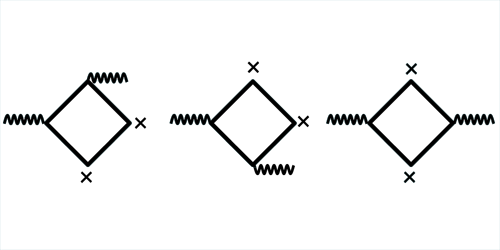Scattering from the Quantum Vacuum
According to quantum theory, the vacuum swarms with particles that pop in and out of existence. While they are virtual, these particles are at the root of observable quantum phenomena like the Casimir effect. James Koga and Takehito Hayakawa at the National Institutes for Quantum and Radiological Science and Technology, Japan, have now detailed a way to measure with unprecedented accuracy a difficult-to-isolate quantum-vacuum effect known as Delbrück scattering. The approach may allow sensitive tests of the theory of quantum electrodynamics (QED).
Delbrück scattering has analogies with the better-known form of scattering responsible for the color of the sky—Rayleigh scattering. Rayleigh scattering arises from the interaction of photons with bound electric charges in the scattering particles. Delbrück scattering instead derives from the interaction of photons with virtual electron-positron pairs in the presence of the Coulomb field of an atomic nucleus. First observed in the 1970s, the effect remains hard to characterize because it occurs in combination with four other types of scattering, including Rayleigh.
Koga and Hayakawa propose a method to isolate and measure Delbrück scattering. The key to their solution is the use of polarized gamma rays. According to their calculations, an appropriate choice of scattering angle, photon polarization, and photon energy would make Delbrück scattering 2 orders of magnitude stronger than that of the other three forms of scattering. Assuming the use of tin as the scattering material and a high-flux gamma-ray source like ELI-NP (Extreme Light Infrastructure - Nuclear Physics)—a facility under construction in Romania—the team predicts that, using data collected over 76 days, the method could double the accuracy achieved in previous experiments.
This research is published in Physical Review Letters.
–Matteo Rini
Matteo Rini is the Deputy Editor of Physics.





